Don't Look Now (Italian: A Venezia... un Dicembre rosso shocking) is a 1973 independent film directed by Nicolas Roeg. It is a thriller adapted from the short story by Daphne du Maurier. Julie Christie and Donald Sutherland portray a married couple who travel to Venice following the recent accidental death of their daughter, after the husband accepts a commission to restore a church. They encounter two sisters, one of whom claims to be clairvoyant and informs them that their daughter is trying to contact them and warn them of danger. The husband at first dismisses their claims, but starts to experience mysterious sightings himself.
| Don't Look Now | |
|---|---|
Original film poster | |
| Directed by | Nicolas Roeg |
| Produced by | Peter Katz |
| Screenplay by | Allan Scott Chris Bryant |
| Based on | "Don't Look Now" by Daphne du Maurier |
| Starring | Julie Christie Donald Sutherland |
| Music by | Pino Donaggio |
| Cinematography | Anthony B. Richmond |
| Edited by | Graeme Clifford |
Production company | Casey Productions Eldorado Films |
| Distributed by | British Lion Films |
Release date | 16 October 1973 |
Running time | 110 minutes |
| Country | United Kingdom Italy |
| Language | English |
| Budget | $1.1 million |
While Don't Look Now observes many conventions of the thriller genre, it focuses on the psychology of grief and the effect the death of a child can have on a relationship. Its depiction of grief has been identified as unusually strong for a film featuring supernatural plot elements.
Don't Look Now is renowned for its innovative editing style and its use of recurring motifs and themes and for a controversial sex scene that was explicit for its time. The film often employs flashbacks and flashforwards in keeping with the depiction of precognition, but some scenes are intercut or merged to alter the viewer's perception of what is really happening. It adopts an impressionist approach to its imagery, often presaging events with familiar objects, patterns and colours using associative editing techniques.
Its reputation has grown in the years since its release and it is now considered a classic and an influential work in horror and British film.
Screenplay
Sometime after the drowning of their young daughter Christine (Sharon Williams) in an accident at their English country home, John Baxter (Donald Sutherland) and his grief-stricken wife Laura (Julie Christie) take a trip to Venice after John accepts a commission from a bishop (Massimo Serato) to restore an ancient church. Laura encounters two elderly sisters, Heather (Hilary Mason) and Wendy (Clelia Matania), at a restaurant where she and John are dining; Heather claims to be psychic and—despite being blind—informs Laura she is able to "see" the Baxters' deceased daughter. Shaken, Laura returns to her table, where she faints.
Laura is taken to the hospital, where she later tells John what Heather told her. John is sceptical but pleasantly surprised by the positive change in Laura's demeanour. Later in the evening after returning from the hospital, John and Laura have passionate sex. Afterwards, they go out to dinner where they get lost and briefly become separated. John catches a glimpse of what appears to be a small child (Adelina Poerio) wearing a red coat similar to the one Christine was wearing when she died.
The next day, Laura meets with Heather and Wendy, who hold a séance to try to contact Christine. When she returns to the hotel Laura informs John that Christine has said he is in danger and must leave Venice. John loses his temper with Laura, but that night they receive a telephone call informing them that their son (Nicholas Salter) has been injured in an accident at his boarding school. Laura departs for England, while John stays on to complete the restoration. Under the assumption that Laura is in England, John is shocked when later that day he spots her on a boat that is part of a funeral cortege, accompanied by the two sisters. Concerned about his wife's mental state and with reports of a serial killer at large in Venice, he reports Laura's disappearance to the police. The inspector (Renato Scarpa) investigating the killings is suspicious of John and has him followed.
After conducting a futile search for Laura and the sisters—in which he again sees the childlike figure in the red coat—John contacts his son's school to enquire about his condition, only to discover Laura is already there. After speaking to her to confirm she really is in England, a bewildered John returns to the police station to inform the police he has found his wife. In the meantime the police have brought Heather in for questioning, so an apologetic John offers to escort her back to the hotel.
Shortly after returning, Heather slips into a trance so John makes his excuses and quickly leaves. Upon coming out of it she pleads with her sister to go after John, sensing that something terrible is about to happen, but Wendy is unable to catch up with him. Meanwhile, John catches another glimpse of the mysterious figure in red and this time pursues it. He corners the elusive figure in a deserted palazzo and approaches it, believing it to be a child. Instead, it is revealed to be a hideous female dwarf, and while John is frozen in terror the dwarf pulls out a meat cleaver and cuts his throat. As the life drains from him, John realises too late that the strange sightings he has been experiencing were premonitions of his own murder and funeral.
Themes
Don't Look Now ostensibly is an occult thriller, but the genre conventions of the Gothic ghost story primarily serve to explore the minds of a grief-stricken couple. The film's director, Nicolas Roeg, was intrigued by the idea of making "grief into the sole thrust of the film", noting that "Grief can separate people ... Even the closest, healthiest relationship can come undone through grief." The presence of Christine, the Baxters' deceased daughter, weighs heavily on the mood of the film, as she and the nature of her death are constantly recalled through the film's imagery: there are regular flashbacks to Christine playing in her red coat as well as the sightings of the mysterious childlike figure also wearing a red coat which bears a likeness to her; the constant association of water with death is maintained via a serial-killer sub-plot, which sees victims periodically dragged from the canals; there is also a poignant moment when John fishes a child's doll out of a canal just as he did with his daughter's body at the beginning of the film.
The associative use of recurring motifs, combined with unorthodox editing techniques, foreshadows key events in the film. In Daphne du Maurier's novella it is Laura that wears a red coat, but in the film the colour is used to establish an association between Christine and the elusive figure that John keeps catching glimpses of. Du Maurier's story actually opens in Venice following Christine's death from meningitis, but the decision was taken to change the cause of death to drowning and to include a prologue to exploit the water motif. The threat of death from falling is also ever present throughout the film: besides Christine falling into the lake, Laura is taken to hospital after her fall in the restaurant, their son Johnny is injured in a fall at boarding school, the bishop overseeing the church restoration informs John that his father was killed in a fall, and John himself is nearly killed in a fall during the renovations. Glass is frequently used as an omen that something bad is about to occur: just before Christine drowns, John knocks a glass of water over, and Johnny breaks a pane of glass; as Laura faints in the restaurant she knocks glassware off the table, and when John almost falls to his death in the church, a plank of wood shatters a pane of glass; finally, shortly before confronting the mysterious red clad figure, John asks the sisters for a glass of water, a piece of symbolism that prefigured Christine's death.
The plot of the film is preoccupied with misinterpretation and mistaken identity: when John sees Laura on the barge with the sisters, he fails to realise it is a premonition and believes Laura is in Venice with them. John himself is mistaken for a Peeping Tom when he follows Laura to the séance, and ultimately he mistakes the mysterious red-coated figure for a child. The concept of Doppelgänger and duplicates feature prominently in the film: reproductions are a constantly recurring motif ranging from reflections in the water, to photographs, to police sketches and the photographic slides of the church John is restoring. Laura comments in a letter to their son that she can't tell the difference between the restored church windows and the "real thing", and later in the film John attempts to make a seamless match between recently manufactured tiles and the old ones in repairing an ancient mosaic. Roeg describes the basic premise of the story as principally being that in life "nothing is what it seems", and even decided to have Donald Sutherland's character utter the line—a scene which required fifteen takes.
Communication is a theme that runs through much of Nicolas Roeg's work, and figures heavily in Don't Look Now. This is best exemplified by the blind psychic woman, Heather, who communicates with the dead, but it is presented in other ways: the language barriers are purposefully enhanced by the decision to not include subtitles translating the Italian dialogue into English, so the viewer experiences the same confusion as John. Women are presented as better at communicating than men: besides the clairvoyant being female, it is Laura who stays in regular contact with their son, Johnny; when the Baxters receive a phone call informing them of Johnny's accident at the boarding school, the headmaster's inarticulateness in explaining the situation causes his wife to intercept and explain instead.
Much has been made of the fragmented editing of Don't Look Now, and Nicolas Roeg's work in general. Time is presented as 'fluid', where the past, present and future can all exist in the same timeframe. John's premonitions merge with the present, such as at the start of the film where the mysterious red-coated figure is seemingly depicted in one of his photographic slides, and when he 'sees' Laura on the funeral barge with the sisters and mistakenly believes he is seeing the present, but in fact it is a vision of the future. The most famous use of this fragmented approach to time is during the love scene, in which the scenes of John and Laura having sex are intercut with scenes of them dressing afterwards to go out to dinner. After John is attacked by his assailant in the climactic moments, the preceding events depicted during the course of the film are recalled through flashback, which may be perceived as his life flashing before his eyes. At a narrative level the plot of Don't Look Now can be regarded as a self-fulfilling prophecy: it is John's premonitions of his death that set in motion the events leading up to his death. According to the editor of the film, Graeme Clifford, Nicolas Roeg regarded the film as his "exercise in film grammar".
Inspirations
Don't Look Now is particularly indebted to Alfred Hitchcock, exhibiting several characteristics of the director's work. The aural match cut following Christine's death from Laura's scream to the screech of a drill references a cut in The 39 Steps, when a woman's scream cuts to the whistle of a steam train. When John reports Laura's disappearance to the Italian police he inadvertently becomes a suspect in the murder case they are investigating—an innocent man being wrongly accused and pursued by the authorities is a common Hitchcock trait. The film also takes a Hitchcockian approach to its mise en scène, by manifesting its protagonist's psychology in plot developments: in taking their trip to Venice the Baxters have run away from personal tragedy, and are often physically depicted as running to and from things during their stay in Venice; the labyrinthine geography of Venice causes John to lose his bearings, and he often becomes separated from Laura and is repeatedly shown to be looking for her—both physical realisations of what is going on in his head.
Nicolas Roeg had employed the fractured editing style of Don't Look Now on his previous films, Performance and Walkabout, but it was originated by editor Antony Gibbs on Petulia. Roeg served as the cinematographer on Petulia, which incidentally also starred Julie Christie, and Gibbs went on to edit
Watch movie Don%27t Look Now online on Amazon
Watch movie Don%27t Look Now online
Watch The Movie On PrimeJaan Full HD Movie Download
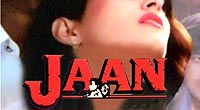
Kabzaa-The Mafia Raaj Full HD Movie Download

Janani Full HD Movie Download
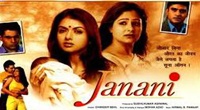
Rahul Full HD Movie Download
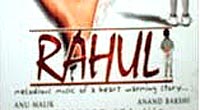
Dhanare Rakhibu Sapatha Mora Full HD Movie Download
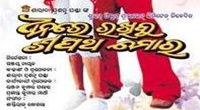
Saahasam (1992) Full HD Movie Download
.jpg)
Gupt Sandesh Full HD Movie Download
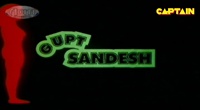
Akbar Aur Birbal Ke Kisse Full HD Movie Download

Sakhiya Full HD Movie Download
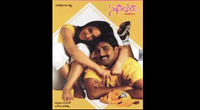
Pudhiavan Full HD Movie Download
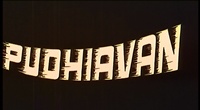
Dadagiri Nahin Chalegi Full HD Movie Download

Bariwali Full HD Movie Download
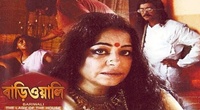
Savithriyude Aranjanam Full HD Movie Download

Alapirandhavan Full HD Movie Download
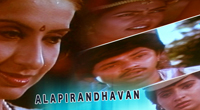
Bharya Biddalu Full HD Movie Download
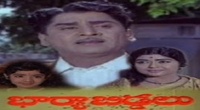
Devi Full HD Movie Download
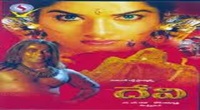
Devudu Chesina Pelli Full HD Movie Download

Palleturi Bava Full HD Movie Download
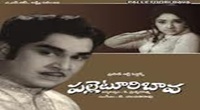
Yuddha Bhumi Full HD Movie Download

An Evening in Paris Full HD Movie Download
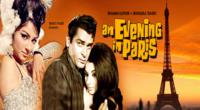
Debdas (Bengali) Full HD Movie Download
.jpg)
Download latest Movie from bollywood
- 1> baaghi 3
- 2> THE SKY IS PINK MOVIE FULL STORY AND REVIEW
- 3> Luka Chuppi
- 4> TO ALL THE BOYS I’VE LOVED BEFORE
- 5> Kabir Singh
- 6> Street Dancer 3D
- 7> Simmba
- 8> Gone Girl
- 9> The Girl Who Lived
- 10> Ludo
- 11> DILWALE DULHANIA LE JAYENGE
- 12> GUILTY
- 13> The Godfather
- 14> Adventures of Rusty
- 15> Sooryavanshi
- 16> Satyameva Jayate 2
- 17> Thappad
- 18> Bhool Bhulaiyaa 2
- 19> KGFChapter 2
- 20> Mardaani 2
- 21> Pinjar
- 22> Shivaji maharaj
- 23> Ek Villian 2
- 24> Hungama 2
- 25> Divergent
- 26> Mumbai Saga
- 27> The Internship
- 28> HIT (telugu)
- 29> Panga
- 30> The perfect date
- 31> 16 December
- 32> Gopala Gopala (Telugu)
- 33> Brahmastra
- 34> Gangubai Kathiawadi
- 35> Manmadhudu
- 36> Nenu local
- 37> Mahanati
- 38> Shatamanam bavathi
- 39> Lagaan
- 40> After
- 41> MOM
- 42> Shamshera
- 43> Raguvaran BTech
- 44> Khakee
- 45> The villain
- 46> OM
- 47> Mr. perfect
- 48> Bueatifull mind
- 49> Hichki
- 50> Gabbar Singh
- 51> Jogi
- 52> Before Sunrise
- 53> Before Sunset
- 54> Before Midnight
- 55> The Big Bull
- 56> Top Gun: Maverick
- 57> The Purge
- 58> The Sky is Pink
- 59> Laxmmi Bomb
- 60> Sadak 2
- 61> Sufna
- 62> Prithviraj
- 63> PK
- 64> Coolie No 1(2020)
- 65> Black Widow
- 66> Dear Zindagi
- 67> Dil Bechara
- 68> PHIR HERA PHERI
- 69> WAR
- 70> Dostana
- 71> RRR: Roudram Ranam Rudhiram
- 72> Maidan
- 73> Dabbang 3
- 74> Chhalaang
- 75> life as we know it
- 76> SherShaah
- 77> Sandeep Aur Pinky Faraar
- 78> Event Horizon
- 79> 83
- 80> Radhe: Your Most Wanted Bhai
- 81> Gunjan Saxena: The Kargil Girl
- 82> Mr India
- 83> Vivah
- 84> Anokha Bandhan
- 85> Ghost
- 86> Bhoot: Part One - The Haunted Ship
- 87> Haseen Dilruba
- 88> Laal Singh Chaddha
- 89> Qismat
- 90> Rajput
- 91> Drive
- 92> Dil Chahta Hai
- 93> Dil Ki Baazi
- 94> Dil Ka Rishta
- 95> Teesri Manzil
- 96> Dil
- 97> Love Aaj Kal
- 98> Khaali Peeli
- 99> Bunty Aur Babli 2
- 100> Atrangi Re
- 101> Gulabo Sitabo
- 102> Jodi
- 103> Suraj Pe Mangal Bhari
- 104> Deewana
- 105> Attack
- 106> Sardar Udham Singh
- 107> Toofan
- 108> THE LOVEBIRDS
- 109> Jersey
- 110> Ginny Weds Sunny
- 111> Thalaivi
- 112> Shiddat
- 113> Angels vs Zombies
- 114> Koi Mil Gya
- 115> Thank God
- 116> Bhuj: The Pride of India
- 117> Hum Aapke Hain Kaun
- 118> The Platform
- 119> Bird Box
- 120> Roohi Afzana
- 121> Torbaaz
- 122> Nikamma
- 123> World War Z
- 124> Extraction
- 125> Train to Busan
- 126> Life of Pi
- 127> SHAADI MEIN JROOR AANA
- 128> Himmat Aur Mehnat
- 129> To All The Boys: P.S. I Still Love You
- 130> Mimi
- 131> Good Newwz
- 132> Shubh Mangal Zyada Saavdhan
- 133> Raabta
- 134> Harry Potter and the Philosopher's Stone
- 135> Harry Potter and the Chamber of Secrets
- 136> Chhapaak
- 137> War of the Worlds
- 138> Harry Potter and the Prisoner of Azkaban
- 139> Harry Potter and the Goblet of Fire
- 140> MURDER MYSTERY
- 141> Shakuntala Devi
- 142> Bachchan Pandey
- 143> Jayeshbhai Jordar
- 144> Sheer Qorma
- 145> Saina
- 146> 'O' Pushpa I hate tears
- 147> Kedarnath
- 148> MS Dhoni The Untold Story
- 149> Chhichhore
- 150> Badhaai Ho
- 151> Unstoppable
- 152> Oz the Great And Powerful
- 153> The Girl on the Train
- 154> Haathi Mere Saathi 2020
- 155> The Conjuring: The Devil Made Me Do It
- 156> Gandhi Se Pehle Gandhi
- 157> The Song of Scorpions
- 158> Srimanthudu
- 159> Hello Guru Prema Kosame
- 160> Beauty and The Beast
- 161> Black Panther
- 162> Charlie and the Chocolate Factory
- 163> Bole Chudiyan
- 164> Fidaa
- 165> Duvvada Jagannadham
- 166> Bruce Lee: The Fighter
- 167> Hyper
- 168> Yaara
- 169> Red (2020)
- 170> Shivam
- 171> That Is Mahalakshmi
- 172> Nishabdham
- 173> Aashram 2020 web series
- 174> Laxmii
- 175> Mismatched
- 176> STUDENT OF THE YEAR 2
- 177> NAIL POLISH
- 178> Ramprasad Ki Tehrvi
- 179> KAAGAZ
- 180> 12 o Clock
- 181> The Power
- 182> bolo hau
- 183> Tribhanga
- 184> JAMUN
- 185> Madam Chief Minister
- 186> Maasaab
- 187> Aadhaar
- 188> Tanhaji
- 189> Bhaagi 3
- 190> Bhootnath
- 191> MALANG
- 192> Jai Mummy Di
- 193> Haathi Mere Saathi 2021
- 194> Shakeela
- 195> Unpaused
- 196> Annayya
- 197> Vamsoddharakudu
- 198> Mrugaraju
- 199> Narasimha Naidu
- 200> Sankranti
- 201> Manasu Maata Vinadhu
- 202> Anjaane
- 203> Apaharan
- 204> Bachke Rehna Re Baba
- 205> Bewafaa
- 206> Roohi
- 207> Radhe
- 208> Zindagi Khoobsoorat Hai
- 209> Yeh Mohabbat Hai
- 210> Yeh Kya Ho Raha Hai?
- 211> The Tomorrow War
- 212> DehradunDiary
- 213> Meri Shaadi Karaoo
- 214> Matruu Ki Bijlee Ka Mandola
- 215> No One Killed Jesica
- 216> Aag Ka Goola
- 217> Eight Million Dollars
- 218> Three Hundred
- 219> Cats and Dog
- 220> Decoy
- 221> Gold Rush
- 222> You Have Got Mail
- 223> Final Destination three
- 224> Tofan
- 225> Jungle
 Story of movie Don%27t Look Now :
Story of movie Don%27t Look Now : 